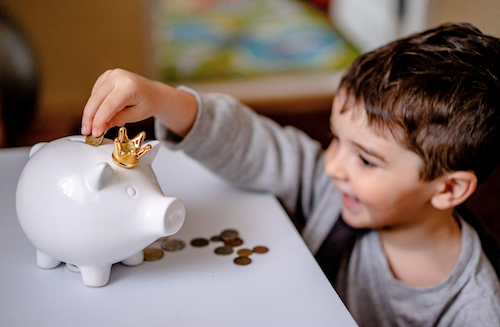Children's Pension: What is it and Should You Set Up One for Your Child?
As parents or guardians, we always want the best for our children. This means that you have to think about their future consciously. Most of the time, parents save for them in instant access accounts, but did you know you can contribute to your child's retirement through a pension plan?

If you want them to have a great life in retirement, you can start by saving up for their retirement. This also means that your children will not have a lot of financial pressure when saving because you’ve given them a good boost.
This guide will help you learn what a children's pension is, and its pros and cons. You’ll also understand factors to consider before setting up a pension fund for your child and the steps to take.
What is a Children’s Pension?
A children's pension is a long-term savings plan set up by a parent on behalf of a child to provide financial security during their retirement. It's a scheme that allows your children to build a nest egg that enjoys the advantages of compounding interest over time.
Usually children's pension funds are usually set up under trusts and protected from income and capital gains tax. Their contribution limits are lower than normal adult pensions, and your children will only access the funds in retirement.
To set up a pension fund for a child, you must be the parent or the legal guardian, and the kid must be less than 18 years. But anyone can contribute to the pension fund, including grandparents.

There are various types of pension plans you can use to save for your child's retirement. Below are two types of children's pension plans.
* Stakeholder pension: This defined contribution plan is a tax-efficient way to save for your child’s future. The contributions will get various tax reliefs, making it have a significant value.
* Junior SIPPs: Self-invested personal pension scheme allows better plan control and offers various investment options. You, however, will be expected to pay an annual fee for various charges, including administration and investment.
Generally, children's pensions work much the same way as adult pension schemes. The difference is that they must be set up by a parent or guardian. The parent, however, ceases to manage the fund when the child attains 18 years.
What are the Pros and Cons of Setting up a Children's Pension Plan?
Pros
* The fund benefits from the interest that compounds over a long period.
* All contributions and gains from the investment are tax-free
* It provides a chance to educate and encourage long-term saving habits.
* It provides financial security for your children's future
Cons
* The funds cannot be accessed until the child retires.
* Pension rules may change over time
Should You Set up a Children's Pension Plan?
Before setting up your child’s pension fund, there are a few things to check to know if it's the right choice for you and your child. Read on to find out.
* Your financial situation: Ask yourself. Can you afford to regularly contribute to your child’s pension plan without stressing your pockets? You must have enough money to take care of your expenses and other unforeseen events.
* Consider your long-term goals: What long-term plans do you have for your child? To provide financial security, a pension plan is a great vehicle. But, if your plans involve providing for their college education or buying a house, consider alternative investment options.
* Funds accessibility: Unlike other savings and investment avenues, pension funds are inaccessible until the child reaches retirement age.
* Alternatives: What alternative options are there to a children's pension fund? These can include Junior ISAs or other long-term savings plans. Though they provide similar benefits to pension plans, contributions are more flexible, and the funds are accessible.
The idea behind setting up a pension fund for your child is to secure their retirement by saving from an early age. This gives the money saved time to accumulate over the years through compound interest. Compound interest helps your investment to keep earning interest on the interest you’ve earned all through the years.

How Can You Set up a Children's Pension Plan?
Here are some of the steps you must take when setting up a pension scheme for your child.
* Understand the various types of pension plans: There are different types of pension plans, such as defined contribution plans, defined benefit plans, and IRAs. You must learn about all available pension plans to pick the right one for your child.
* Contribution amount: How much do you want to contribute towards your child’s retirement? Go for an amount that gives your child a good start in their retirement savings. It must also be affordable for you.
* Choose the right financial institution: A pension plan is a long-term investment scheme, so ensure you choose a stable financial organisation with a good track record of managing pensions. This includes compensation for bad pension advice when things don’t go as planned.
* Open your child’s pension account: To open a pension account for your child, you must provide all the required documentation and pay the initial contribution needed.
* Select the investment options: After opening your child’s pension account, choose the investment vehicles to help the fund grow. While at it, ensure that their risk levels and fees are low and you know the historical performance of these investment options.
* Periodically review and adjust the pension plan: To ensure that the pension plan meets the retirement plans of your child, consider reviewing it periodically. Review the initial investment options to ensure the fund is on the right track.
* Educate your child about the retirement plan: Teach your child the value of saving from a young age. It will help them see the value of a long-term financial savings plan.
Conclusion
Getting a pension scheme for your children is a great way to offer financial security when they retire. If you start saving early, your child will reap the benefits of compounding interest for a long time. It is a great step to take, but you must weigh the pros and cons of having a children's pension fund. Try and evaluate alternative plans that can suit the needs of your child. A little investment today can bring a big future for your child.